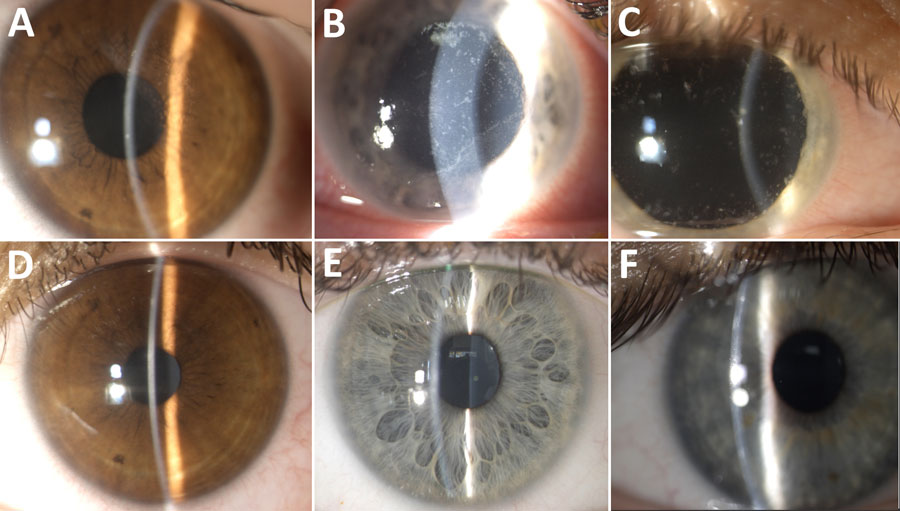Volume 31, Number 8—August 2025
Dispatch
Microsporidial Keratoconjunctivitis Caused by Vittaforma corneae, Sea of Galilee, Israel, 2022–2024
Figure

Figure. Slit-lamp photos of 3 patients before and after treatment of microsporidial keratoconjunctivitis caused by Vittaforma corneae, Sea of Galilee, Israel, 2022–2024. A) Patient 1 before treatment, visual acuity 0.8 decimal. B) Patient 2 before treatment, visual acuity 0.3 decimal. C) Patient 3 before treatment, visual acuity 0.3 decimal. D) Patient 1 after treatment, visual acuity 1 decimal. E) Patient 2 after treatment, visual acuity 1 decimal. F) Patient 3 after treatment, visual acuity 1 decimal. Clinical manifestations in all 3 patients included corneal epithelial microsporidial infiltrates and conjunctival irritation. After treatment with 0.02% topical chlorhexidine, the infiltrates resolved without scarring or other complications.